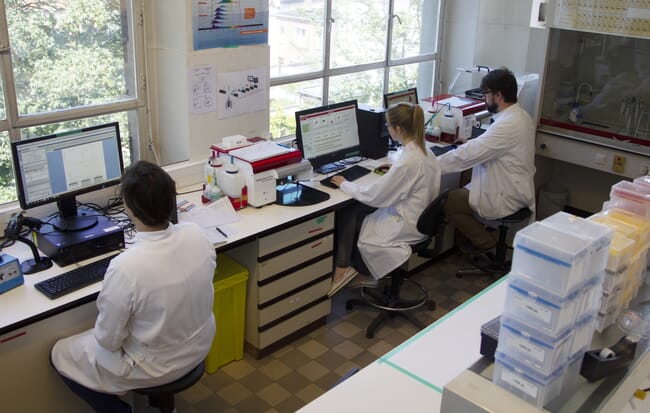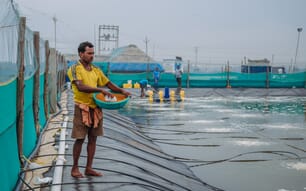
Called KYTOS, after the ancient Greek word for cell, it is due to be launched commercially in the first quarter of the year. The startup uses cutting-edge flow cytometric fingerprinting to rapidly characterise microbiomes in water samples.
According to Prof Nico Boon, from Ghent University’s Centre for Microbial Ecology and Technology (CMET), it could potentially replace - but also complement - existing microbial analysis techniques. The technology will be attractive to farmers as it provides them with an early warning mechanism, should bacterial imbalances – which tend to denote imminent disease outbreaks – occur in their facilities.
Existing bacterial monitoring techniques
Prof Boon explains that existing techniques for assessing bacterial communities, while sometimes effective, have their drawbacks – notably in terms of time required to produce results.
“If you want to look at bacteria or algae, you have a few options. The most commonly used technique is culturing – we culture bacteria on agar plates, we’ve been doing that for 200 years and legislation, for example checking the quality of foods and the quality of drinking water, means we are still using that technique,” he reflects.
“But there are a few problems with that – it’s quite time consuming, so you need to wait at least one day before you have a result. And, a lot of people forget this, but most of the bacteria in nature you cannot culture using run-of-the-mill practices. Pathogens we have worked with for 200 years, but many natural bacteria which are driving biogeochemical processes we still cannot culture, so a large fraction remains hidden,” he adds.

While more advanced techniques have been developed, these also have their drawbacks, in particular for a sector where health challenges can emerge very swiftly.
“Luckily, around 20 years ago, molecular techniques became more popular and we now have plenty of them. The principle is easy, you take a sample and amplify all the genetic material and you see what is there. In an academic environment, great. But it’s, again, time-consuming. It takes more time to do this in many cases than doing the culturing. It’s also quite specialised and not very cheap,” he reflects.
As a result, Prof Boon and his colleagues at CMET began to consider the use of other tools.
“I started thinking about whether we have other techniques that are much faster and cheaper but can still produce useful information. Because, in industry, to manage the [microbial] community you need to have fast results, so that you can take action,” he emphasises.
Flow cytometry allows water samples to be analysed within 15 minutes, by using a laser to detect the properties of every cell in a given sample.
“It’s a very common technique used in medical research, but for bacteria it’s not used so often… it’s very fast, you can even use it online. If you give me your sample I can tell you the results in 15-20 minutes. There is also a lot of information in these data because we are analysing at least 1,000 cells per second and we have data from 30,000 cells – based on this we can make a microbial fingerprint [of the sample] very quickly,” he explains.
“What we’ve focused on in recent years is making microbial fingerprinting algorithms that will tell us a little bit more about the properties of the microbial community. But, can we link the function of the community to this fingerprint? If we can do that we can work preventatively. For example, to avoid the outbreak of diseases or assess whether a process failure in drinking water will happen or not,” he says.
Commercial trials
The researchers recently trialled the technology in several commercial shrimp operations and were able to pinpoint the hatchery tanks and growout ponds where health issues were developing. They are currently deploying the tool in a commercial setting to evaluate to what extent it can be used to prevent disease outbreaks.
“There’s still a bit of work to be done, but we think that in the very near future we will be able to translate these complex microbial fingerprints into specific management advice that empowers farmers with actionable microbial management,” says Prof Boon.
“At the moment we have completed several proofs of concept [trials] in a farm setting and are gathering a lot of data, and we are currently discussing the commercial implementation with our first set of partners – we will have some things on the market this year,” he concludes.




